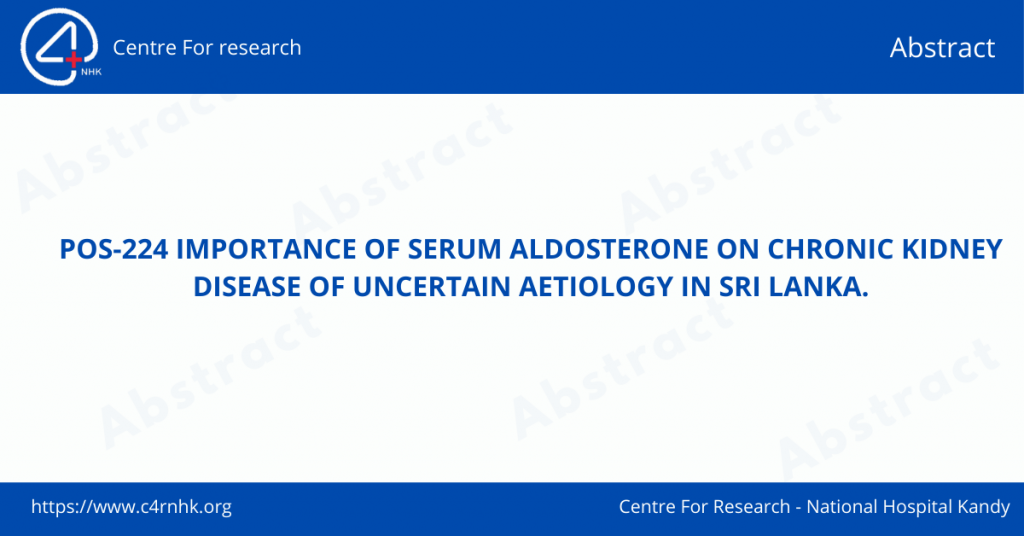MGIH BANDARA1, SWMPWCIB WEERAKOON1, HMDK HERATH1, HPM HEWAVITHARANE1, HPNS HEWAPATHIRANE1, HGN ERANDIKA1, N NANAYAKKARA2
1Department of NEPHROLOGY, Centre For Research – National Hospital Kandy, Sri Lanka
2Department of Nephrology, National Hospital Kandy, Sri Lanka
Objectives: This study has explored familial aggregation patterns in Sri Lankan CKDu patients related to the onset and course of the illness.
Methods: The study was conducted in Wilgamuwa, an endemic region for CKDu in Matale District, Central Province, Sri Lanka, from 2017 August to 2020 January. Selected participants had the preliminary evaluation at the clinic followed by scheduled home visits for a detailed interviewer-administered questionnaire. All statistical analysis was performed using Minitab 18 statistical software at a 5% significance level ( p=0.05). All the categorical variables are presented as proportions and continuous data as their measures of central tendency.
Results: 293 clinically proven CKDu-affected index group, and their family members (N=792, Male: Female= 1:1.33) were investigated in this study. The mean age (SD) of the patients was 53.5(8.3) years. There was a male preponderance within the CKDu affected index group, as evidenced by a male: female ratio of 3.13:1 (p< 0.001). A total of 59.04 %(p<0.05) of patients had at least one family member with diagnosed kidney disease. The index group had a maternal origin of kidney disease in 38 (12.97%) cases, whereas the paternal origin of kidney disease was discovered in 34 cases (11.60%). 30.03% of patients had more than one family member with renal diseases.
Conclusions: This study provides compelling evidence for familial predisposition of CKDu, with the nearly equal prevalence of renal disease in both the maternal and paternal lineages. It suggests that the genetic susceptibility to CKDu is more likely to be linked with somatic genes, even though increased exposure to other etiological variables such as environmental and occupational factors has rendered the disease male predominant. Furthermore, these findings emphasize the importance of further research into the genetic makeup of CKDu.



